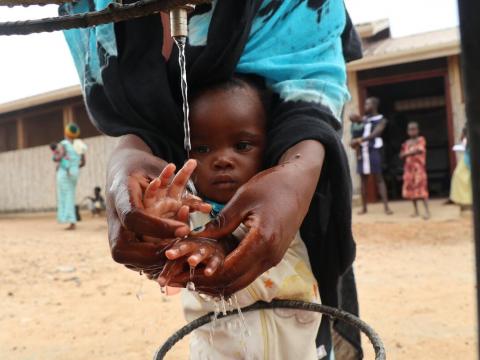Can coronavirus teach us how to end violence against children?

By Elena Gaia, Director of Global Campaigns
We hear it constantly on the news right now, and it somehow makes us feel better: coronavirus knows no borders. The ongoing pandemic indeed affects, or will affect, every human being on the planet, every activity and business, and every cause.
As a child rights activist, I am feeling anxious about children amidst the current crisis. How are the millions of children stuck at home feeling? Are they able to learn using remote technology? What do they do if they have no computer, or the internet in their community can’t cope? Are they staying connected to cherished friends and loved ones? Are they trapped with abusers? How are children dealing with potential domestic abuse, illness or limited resources?
Many of the same things we’re asking, and learning, right now are directly applicable to our lifelong quest to end violence against children. A quest I fear we are about to see knocked off course.
1. It spreads fast, unless we break the transmission chain
COVID-19 spreads incredibly fast from person to person, from one country to another. Similarly, violence spreads in a vicious circle. Actually, in concentric circles. Children and adults who have been victims of violence are much more likely to adopt violent behaviours in the future. Children who are beaten and abused may use violence on their peers. The effects of violence on one child affect whole families and communities.
But, just as this virus affects people differently, so too does the legacy of violence. Children who are abused don’t always go on to use violence. So, what is the equivalent of social distancing, of testing and tracing, for ending violence against children?
2. Preventing is cheaper than responding
We keep hearing that many people infected with coronavirus may develop only mild symptoms or none at all. Those who develop significant respiratory complications will require intensive care therapy, which is in short supply and extremely expensive. Authorities and experts were unanimous in recommending prevention measures as the absolute priority since the very beginning.
Violence in all its forms is estimated to affect every other child globally every year. Some forms such as sexual violence or child marriage, affecting millions of girls, generate major complications for the children survivors who then require specialised medical and psycho-social support to undo the damage. Unsurprisingly, these services are rarely available to all the children who need them, typically for lack of resources. And that’s just the monetary cost of violence. The other costs are, in essence, incalculable.
There is too little focus globally on preventing violence against children, despite its proven benefits: how can we make prevention the default response to violence?
3. Behaviours, behaviours, behaviours
Prevention of and response to COVID-19 relies primarily on each of us adopting behaviours that are lifesaving, thanks to (or despite of) their simplicity. I love those videos with hands, soaps and water that make it fun and cool to practice basic hygiene measures?
Ending violence against children is also at its core about changing behaviours. Disciplining my child with words of love instead of shouting at him. Explaining to my teenage girl what it means to become a woman instead of marrying her at 15. My husband understanding why marrying our daughter off is not ok just because I married him when I was 13, and denies her the education and life she deserves and is entitled to. My children’s teacher realising that hitting her students hinders their education and violates their rights. Calling out those children who bully my friends on social media instead of adding to the rumours.
Most of these behaviours and the interventions that address them have been studied and codified. What we do not have yet is what authors Chip and Dan Heath describe as the ‘critical moves’: specific, concrete and small behaviours that help people switch towards much larger change.
What is the equivalent of hand washing for ending violence against children?
4. Everyone needs to step up action
In the current crisis, governments are enforcing legal restrictions on personal and market freedom that were unimaginable until now. Many companies are scaling up remote working opportunities; some are even switching their operations to produce life-saving items. Individual citizens are accepting changes in their lifestyles, making sacrifices and showing solidarity and care for each other with unexpected grace and levity.
The big lesson here is: where there is a will, there is a way to address even the most complex challenges humanity faces.
Likewise, at World Vision we believe that it takes everyone to end violence against children, it takes a world. This aspiration is however not matched by actions of a magnitude comparable to the challenge.
How can we inspire the same acceleration of activism to end the epidemic of violence against children?
Despite the intensity and tragedy of the ongoing coronavirus crisis, the shared solutions that are emerging give me hope that as a global community of humans we can radically tackle other pressing issues in the future.
(Article photo: Merlin Benson, 18 and a mother to 9months Sarah, says, “This disease is so terrifying. I will make sure my baby and I are safe, by following the advice shared at the nutrition center.” World Vision has recently added awareness and prevention tips to avoid COVID-19. /Scovia Faida Charles)